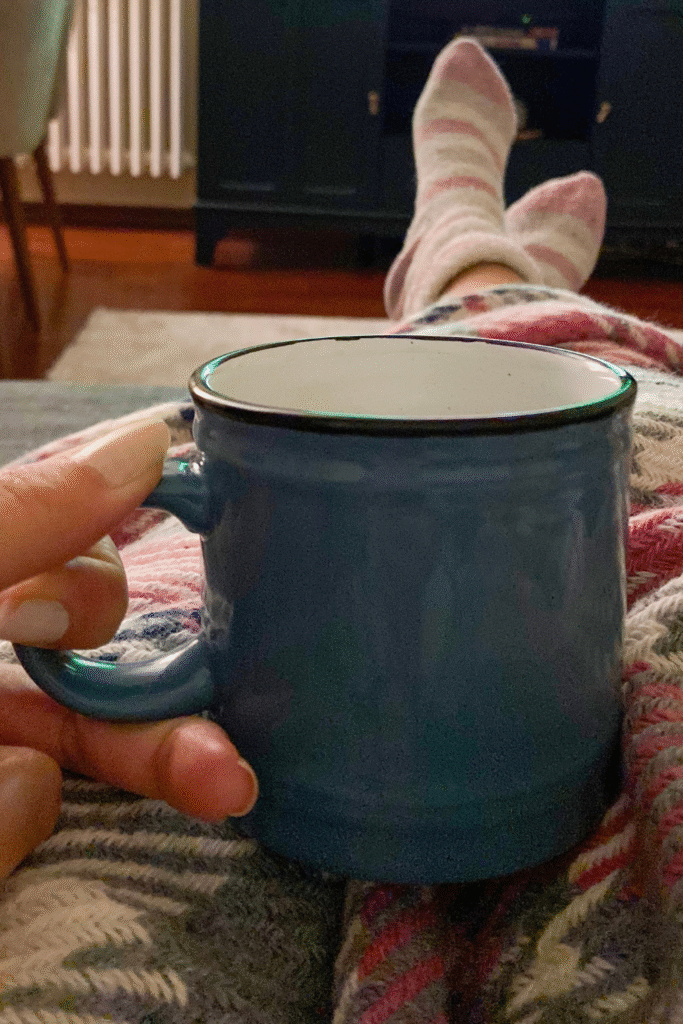Introduction
Rest is not laziness—it’s a scientifically proven productivity tool. In our hustle-focused culture, taking breaks often feels like slacking off, but research shows the opposite.
Strategic rest improves creativity, focus, memory, and overall performance.
This article Rest is Productive too, explores the science behind rest, different types of effective breaks, and how integrating rest into your routine can supercharge your productivity and well-being.
Table of Contents
- The Science of Rest
- Why Breaks Boost Brain Function
- Types of Productive Breaks
- How Often Should You Take Breaks?
- Signs You Need Rest to Stay Effective
- Common Myths About Rest and Productivity
- How to Plan Rest into a Busy Schedule
- Rest vs. Distraction: Knowing the Difference
- Benefits of Microbreaks and Power Naps
- FAQs: Rest and High Performance
1. The Science of Rest
Scientific studies reveal that the brain requires downtime to process information and recover from mental fatigue. During rest, the brain activates the Default Mode Network (DMN), which is essential for creativity, memory consolidation, and self-reflection.
This network is more active during restful moments than during focused tasks, suggesting that rest is when the brain does some of its most complex processing.
Recent research from institutions like NIH, Stanford, and Harvard confirms that taking strategic breaks enhances cognitive performance by preventing overload and supporting the brain’s natural recovery cycles. Breaks allow neurons to repair and rewire, which helps with learning and long-term retention.
Additionally, rest supports the glymphatic system, a brain-cleaning process that removes waste products built up during waking hours.
Beyond cognitive benefits, rest helps regulate mood and reduce the production of stress hormones like cortisol. Even short pauses—like standing, stretching, or meditating—can lead to noticeable improvements in clarity, decision-making, and emotional regulation.
Rest isn’t a passive activity—it’s a powerful mechanism for mental and physical optimization. In this way, rest replenishes energy stores, enhances well-being, and helps maintain peak performance longer.
2. Why Breaks Boost Brain Function
Breaks interrupt mental fatigue, reset attention, and prevent burnout. Studies show that short rests improve problem-solving, working memory, and even verbal reasoning. Without breaks, mental saturation builds, and productivity declines.
Brain imaging research confirms that during breaks, areas related to executive function and emotional regulation become more active, helping restore balance and clarity.
Taking a walk, sipping water, or closing your eyes for a few moments can refresh cognitive resources and increase accuracy in decision-making.
Structured breaks—such as the Pomodoro technique—have been shown to increase sustained focus while reducing emotional exhaustion.
Importantly, regular breaks also improve motivation by making work feel more manageable and reducing resistance.
Rather than being a disruption, breaks act like mental bookmarks: they help segment tasks and provide cognitive closure. This makes it easier to resume work efficiently.
In this way, breaks are not signs of weakness but a method for working smarter, not harder.
3. Types of Productive Breaks
Not all breaks are created equal. Productive break types include:
- Walking outdoors
- Power naps (10–20 minutes)
- Stretching or light exercise
- Meditation or breathing exercises
- Creative hobbies like doodling or journaling Each of these engages different brain areas, encouraging relaxation and refreshment.
4. How Often Should You Take Breaks?
Experts recommend a break every 60–90 minutes, as studies show our attention span and cognitive performance begin to decline after this window.
The Pomodoro Technique, which involves 25-minute work blocks followed by 5-minute breaks, is one effective method for maintaining focus. This technique leverages the brain’s natural rhythms to enhance productivity and reduce mental fatigue.
For more extended work sessions, taking a longer break of 15–30 minutes can reset your brain, lower stress levels, and prevent burnout.
Activities such as stretching, walking, or even mindfulness meditation during these longer breaks have been shown to restore energy and improve mood.
Incorporating regular eye breaks—like the 20-20-20 rule (look 20 feet away for 20 seconds every 20 minutes)—is also vital for reducing digital eye strain.
Most importantly, listen to your body. Signs like yawning, loss of concentration, irritability, or physical discomfort are cues that your brain and body need recovery.
Ignoring these can lead to compounding stress and reduced efficiency throughout the day. Breaks are not indulgences—they are essential resets for maintaining peak mental clarity and sustainable work habits.
5. Signs You Need Rest to Stay Effective
Indicators that you need rest include:
- Decreased focus
- Frequent mistakes
- Eye fatigue
- Irritability
- Low creativity
- Physical restlessness Ignoring these signs can lead to mental burnout and reduced performance.
6. Common Myths About Rest and Productivity
Myths include:
- “Rest is for the weak”
- “Real achievers don’t take breaks”
- “Working longer means working better” These beliefs are outdated. Science shows rest is critical to sustaining energy, improving output, and preventing health issues.
7. How to Plan Rest into a Busy Schedule
Schedule breaks like meetings. Set alarms to remind yourself when it’s time to pause, and treat these intervals as essential appointments with your brain.
Use digital calendars or productivity apps like Notion, Google Calendar, or Focus Booster to visually block out rest periods. Doing so creates accountability and builds consistency in your workflow.
Prioritize quality over quantity—five minutes of deep breathing, stretching, or focused mindfulness is far more rejuvenating than twenty minutes of passive scrolling through social media.
Aim to align your break style with your energy needs: a physical break after intense cognitive work, or a mental pause after repetitive tasks. Keep a break list handy so you can choose rejuvenating actions quickly.
Integrate rest into your schedule with the same respect as deep work time. You wouldn’t skip a client call—so don’t skip your cognitive reset.
View rest as a tool for sustained excellence, not a reward for burning out. When scheduled and executed well, these moments of pause boost resilience, creativity, and mental agility throughout the day.
8. Rest vs. Distraction: Knowing the Difference
Scrolling through social media isn’t rest—it’s a cognitive decoy that consumes attention without offering real restoration.
Studies show that passive digital consumption can elevate stress hormones, increase mental clutter, and prolong fatigue rather than relieve it. True rest involves deliberate mental disengagement from tasks and stimulation.
To recharge effectively, focus on activities that promote physiological calm and mental clarity. Stretching helps increase blood flow and relieve muscle tension built up during sedentary work.
Walking, especially in nature, lowers cortisol levels and boosts dopamine, enhancing mood and creativity. Deep breathing or diaphragmatic breathing resets the nervous system by activating the parasympathetic response, improving focus and reducing anxiety.
Intentional rest should also include minimizing sensory input—closing your eyes, sitting in silence, or practicing brief mindfulness meditation can help your brain shift out of high-alert states and into recovery mode.
Unlike digital distractions, these activities allow the brain’s Default Mode Network to activate, facilitating introspection and memory consolidation. The goal is to disconnect to reconnect—allowing your cognitive systems to reboot and prepare for focused performance.
9. Benefits of Microbreaks and Power Naps
Microbreaks (under 2 minutes) and power naps are powerful tools for cognitive recovery. These short, deliberate pauses allow the brain and body to reset without disrupting workflow.
Research indicates that microbreaks taken every 30–60 minutes can prevent the onset of fatigue, improve sustained attention, and reduce musculoskeletal discomfort caused by prolonged sitting.
Power naps, on the other hand, provide rapid restoration. NASA’s research on pilots and astronauts found that a 20-minute nap improved alertness by 34% and performance by 16%.
These short naps enhance memory, decision-making, and motor skills by allowing the brain to enter light sleep without descending into deeper sleep cycles, which could cause grogginess.
Incorporating brief pauses—like standing up, looking away from your screen, or doing wrist stretches—can prevent repetitive strain and re-energize the mind.
Both microbreaks and naps are ideal for knowledge workers, students, and creatives who experience mental fatigue. When strategically planned, they can elevate not just productivity, but also mood, resilience, and long-term brain health.
10. FAQs: Rest and High Performance
Q1: Can short breaks really make a difference?
Yes. Even a 2-minute break can reset your focus and reduce mental fatigue.
Q2: What’s the ideal break schedule?
Try 5–10 minutes every hour or 15–30 minutes after 90 minutes of work.
Q3: Are naps good for productivity?
Yes, especially short naps (10–20 minutes) to boost alertness and memory.
Q4: Is it bad to work through breaks?
Yes. It reduces efficiency and increases the risk of burnout.
Q5: How do I avoid wasting breaks on distractions?
Plan your break activities. Opt for breathing exercises, walks, or hydration.
Q6: Does resting mean doing nothing?
Not necessarily. Active rest—like yoga or journaling—also counts.
Q7: What’s the difference between rest and procrastination?
Rest is intentional and restorative; procrastination is avoidance.
Q8: Can breaks improve mental health?
Yes. Breaks lower cortisol levels and help manage stress.
Q9: Should I feel guilty for taking breaks?
No. Breaks are essential to long-term productivity and wellness.
Q10: How do I build a break habit?
Start small. Set reminders, track benefits, and normalize rest as productive.
Productivity & Rest Comparison Table
| Factor | Without Breaks | With Strategic Breaks |
|---|---|---|
| Focus Duration | Short-lived | Prolonged and sustained |
| Creativity | Decreases over time | Enhanced after rest |
| Mistake Frequency | Increases | Reduces with mental refresh |
| Mental Clarity | Foggy | Sharper and more alert |
| Mood & Motivation | Diminishes | Boosted through recovery periods |
Remember: you don’t have to earn your rest. You need it to evolve, innovate, and thrive. Make rest a habit, and your productivity will thank you.
Rest is not a sign of weakness or laziness—it’s a strategic investment in your mind and body. Just as muscles need time to rebuild after physical exertion, your brain requires recovery to function at its best. Incorporating rest is a proactive choice that maximizes your efficiency, amplifies your creativity, and preserves your emotional well-being.
As you plan your days, remember to carve out space not just for action, but for restoration. Whether it’s through mindful breathing, a short nap, or a mindful walk, these moments of pause lay the groundwork for sustainable success.
Ultimately, rest is the hidden powerhouse behind performance. Embrace it with intention, and you’ll not only avoid burnout—you’ll thrive with clarity, resilience, and renewed passion.











